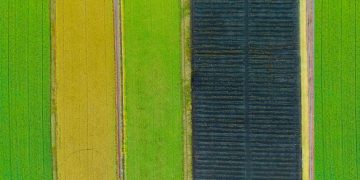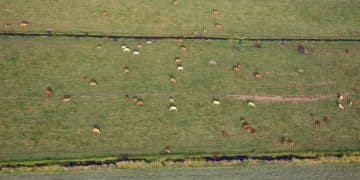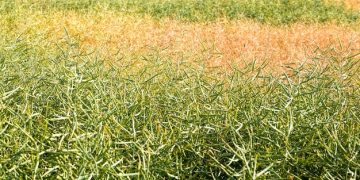Selecting Cover Crops: Key Considerations for Sustainable Soil Management
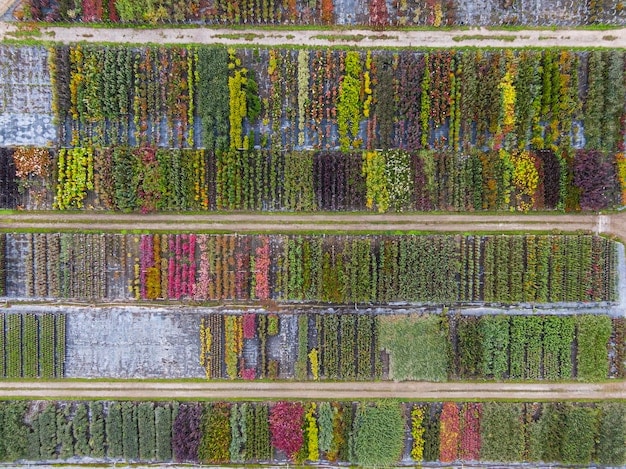
Selecting cover crop species for sustainable soil management involves considering factors like climate, soil type, primary goals, and crop rotation to enhance soil health, suppress weeds, and manage nutrients effectively.
Selecting the right cover crop species is crucial for achieving sustainable soil management. What Are the Key Considerations for Selecting Cover Crop Species for Sustainable Soil Management? This guide explores essential aspects to help you make informed decisions.
Understanding the Role of Cover Crops in Sustainable Agriculture
Cover crops play a vital role in sustainable agriculture by improving soil health and providing numerous environmental benefits. They are plants grown primarily to benefit the soil rather than for harvest, significantly enhancing agricultural systems’ sustainability.
Benefits of Cover Crops
Cover crops offer several advantages, including reducing soil erosion, improving water infiltration, and suppressing weeds. These benefits contribute to healthier soil and more resilient agricultural practices.
Integrating Cover Crops into Farming Systems
Integrating cover crops requires careful planning, considering factors like planting time, termination methods, and species selection. Successful integration can lead to reduced fertilizer use and increased crop yields.
- Improve soil structure and fertility.
- Reduce soil erosion and nutrient runoff.
- Suppress weeds and pests naturally.
- Enhance water infiltration and retention.
In summary, understanding the role and benefits of cover crops is the first step toward sustainable soil management. Integrating them thoughtfully can transform agricultural practices for long-term sustainability.
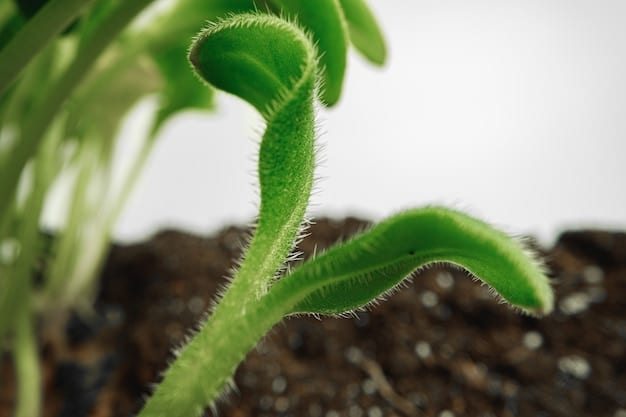
Assessing Your Soil and Climate Conditions
Before selecting cover crop species, assessing soil and climate conditions is essential. This assessment ensures that the chosen species will thrive and effectively address your specific agricultural needs.
Soil Type and Composition
Understanding your soil type, whether sandy, loamy, or clayey, is crucial. Different cover crops are better suited to different soil types, affecting their growth and performance.
Climate and Growing Season
Climate conditions, including temperature, rainfall, and growing season length, significantly impact cover crop selection. Choosing species that align with your local climate ensures successful establishment and growth.
- Conduct a soil test to determine nutrient levels and pH.
- Analyze historical weather data for temperature and rainfall patterns.
- Evaluate the length of the growing season available for cover crops.
Careful assessment of soil and climate conditions forms the foundation for successful cover crop selection. This ensures optimal growth and the realization of the intended benefits for sustainable soil management.
Defining Your Goals for Cover Cropping
Clearly defining your goals for cover cropping is essential for selecting the most effective species. Different cover crops offer various benefits, so aligning your selection with your specific objectives is crucial.
Erosion Control
If erosion control is your primary goal, choose cover crops with dense root systems and rapid growth. These characteristics help bind the soil and prevent erosion from wind and water.
Weed Suppression
For weed suppression, select cover crops that compete effectively with weeds for resources. Rapidly growing and dense-canopied species can outcompete weeds, reducing their prevalence.
Nutrient Management
To improve nutrient management, consider cover crops that can scavenge nutrients or fix nitrogen. These crops help retain nutrients in the soil and reduce the need for synthetic fertilizers.

- Identify the primary challenges your farm faces, such as erosion, weeds, or nutrient deficiencies.
- Prioritize your goals based on their importance to your farming system.
- Choose cover crop species that align with your prioritized goals.
Defining your goals provides a clear direction for cover crop selection, ensuring you choose species that effectively address your specific needs and contribute to sustainable soil management.
Selecting Cover Crop Species Based on Functional Traits
Selecting cover crop species based on their functional traits ensures they align with your specific goals and environmental conditions. Different traits offer unique benefits for soil health and agricultural productivity.
Nitrogen Fixation
Leguminous cover crops, such as clover and vetch, can fix nitrogen from the atmosphere, enriching the soil with this essential nutrient. This reduces the need for synthetic nitrogen fertilizers.
Biomass Production
Species like rye and oats produce significant biomass, which can suppress weeds, improve soil structure, and enhance water infiltration. High biomass cover crops are ideal for improving overall soil health.
Rooting Depth and Structure
Cover crops with deep root systems, like daikon radish, can break up compacted soil layers and improve water and nutrient uptake. Diverse rooting depths also enhance soil structure.
Considering functional traits allows for targeted selection of cover crop species to address specific soil management and agricultural productivity needs. Aligning species with functional goals ensures optimal benefits for sustainable agriculture.
Managing Cover Crop Termination
Proper management of cover crop termination is crucial for maximizing their benefits and minimizing potential negative impacts on subsequent crops. Termination methods must be carefully planned and executed.
Termination Methods
Common termination methods include mowing, herbicide application, and tillage. The choice of method depends on factors like cover crop species, climate, and farming system.
- Mowing: Effective for terminating some species, but may require multiple passes.
- Herbicide Application: Provides quick and reliable termination, but requires careful consideration of herbicide resistance.
- Tillage: Can be effective but may negate some of the soil health benefits of cover crops.
Timing of Termination
The timing of termination is crucial for balancing cover crop benefits with the needs of the following crop. Terminating too early may reduce the benefits, while terminating too late can interfere with planting.
Effective management of cover crop termination ensures that the benefits are fully realized while minimizing potential negative impacts on subsequent crops. Careful planning and timely execution are essential for success.
Integrating Cover Crops into Crop Rotations
Integrating cover crops into crop rotations is a strategic approach to maximizing their benefits and improving overall farm sustainability. Thoughtful planning is essential for successful integration.
Planning Crop Rotations with Cover Crops
Consider the timing of planting and termination in relation to cash crops. Ensure that cover crops fit seamlessly into the rotation without disrupting the growth of primary crops.
Benefits of Integrated Rotations
Integrated rotations provide multiple benefits, including improved soil health, reduced pest and disease pressure, and increased crop yields. This holistic approach enhances farm sustainability.
- Plan rotations at least one year in advance.
- Consider the nutrient requirements of both cover crops and cash crops.
- Adapt the rotation based on changing environmental conditions and farm needs.
Integrating cover crops into crop rotations enhances the sustainability and productivity of farming systems. Strategic planning and adaptation are key to achieving long-term success.
| Key Point | Brief Description |
|---|---|
| 🌱 Soil Health | Improving soil structure and fertility with cover crops. |
| 🌦️ Climate Factors | Matching cover crop species to local climate conditions. |
| 🎯 Goal Setting | Defining specific objectives like erosion control or weed suppression. |
| 🔄 Crop Rotation | Integrating cover crops into planned crop rotations for best results. |
Frequently Asked Questions
▼
Cover crops improve soil health by increasing organic matter, reducing erosion, suppressing weeds, and managing nutrients, leading to healthier and more productive agricultural systems.
▼
Consider your soil type, climate, and specific goals when selecting a cover crop. Different species offer unique benefits, so align your choice with your farm’s specific needs.
▼
Common termination methods include mowing, herbicide application, and tillage. The choice depends on the cover crop species, climate conditions, and your farming system’s specific requirements.
▼
Cover crops compete with weeds for resources, reducing their growth and prevalence. Rapidly growing species with dense canopies are particularly effective at suppressing weeds in agricultural fields.
▼
Yes, leguminous cover crops can fix nitrogen from the atmosphere, enriching the soil and reducing the need for synthetic nitrogen fertilizers, promoting more sustainable nutrient management practices.
Conclusion
Selecting the right cover crop species is critical for sustainable soil management, requiring careful consideration of soil and climate conditions, specific goals, functional traits, termination methods, and integration into crop rotations. By making informed decisions, farmers can enhance soil health, improve agricultural productivity, and promote long-term sustainability.
